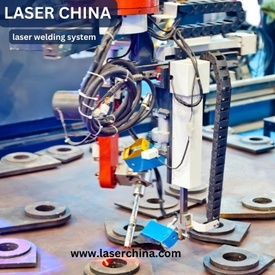In the realm of industrial fabrication, precision and efficiency are paramount. As industries continue to evolve, the demand for advanced welding technologies has intensified. Among these technologies, laser welding system stand out as game-changers, offering unparalleled accuracy, speed, and versatility. In this guide, we delve deep into the world of laser welding system, exploring their capabilities, applications, and benefits.
Understanding Laser Welding Systems
Laser welding systems utilize high-energy laser beams to fuse materials together with exceptional precision. Unlike traditional welding methods, such as arc welding or gas welding, laser welding minimizes heat distortion and produces clean, precise welds. This makes it ideal for applications where accuracy and aesthetics are critical, such as automotive manufacturing, aerospace engineering, and medical device production.
Key Components and Operation
A typical laser welding system consists of several components, including a laser source, focusing optics, a workpiece handling system, and control software. The laser source generates the high-intensity beam, which is then focused onto the workpiece by the optics. The workpiece handling system ensures proper positioning and movement during the welding process, while the control software regulates parameters such as power, pulse duration, and beam diameter.
Applications Across Industries
The versatility of laser welding systems makes them invaluable across a wide range of industries. In automotive manufacturing, they are used for welding body panels, exhaust systems, and battery enclosures with exceptional precision. In aerospace engineering, laser welding ensures the integrity of critical components like turbine blades and fuel system components. Similarly, the medical device industry relies on laser welding for joining intricate components such as surgical instruments and implantable devices.
Advantages Over Traditional Welding Methods
The adoption of laser welding systems offers numerous advantages over traditional welding methods. Firstly, their non-contact nature minimizes material distortion and reduces the need for post-welding finishing. Additionally, laser welding produces narrow, deep welds with minimal heat-affected zones, resulting in stronger and more durable joints. Moreover, the automation capabilities of laser welding systems enhance productivity and reduce labor costs, making them highly cost-effective solutions for industrial manufacturers.
Considerations for Implementation
Before implementing a laser welding system, several factors must be considered to ensure optimal performance. These include the choice of laser source (such as fiber, CO2, or solid-state lasers), material compatibility, joint design, and process parameters. Furthermore, operator training and maintenance schedules are essential for maximizing the lifespan and efficiency of the system.
In conclusion, laser welding system represent a pinnacle of precision and efficiency in modern manufacturing. By understanding their capabilities, applications, and benefits, businesses can unlock new levels of productivity and quality in their production processes. Whether in automotive, aerospace, medical, or other industries, laser welding systems continue to redefine the standards of precision engineering.


No comments yet